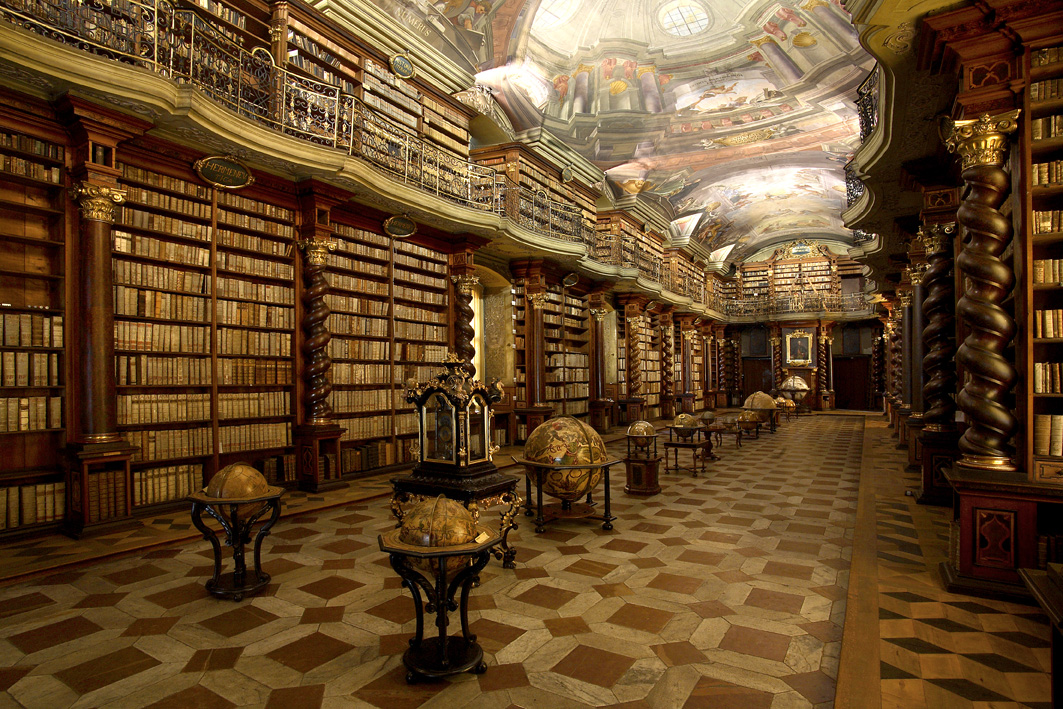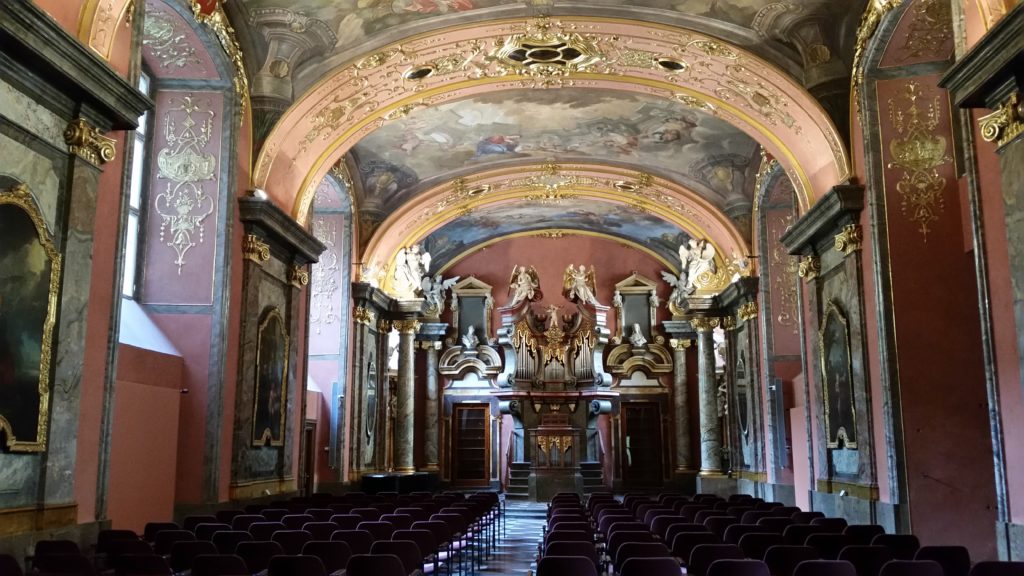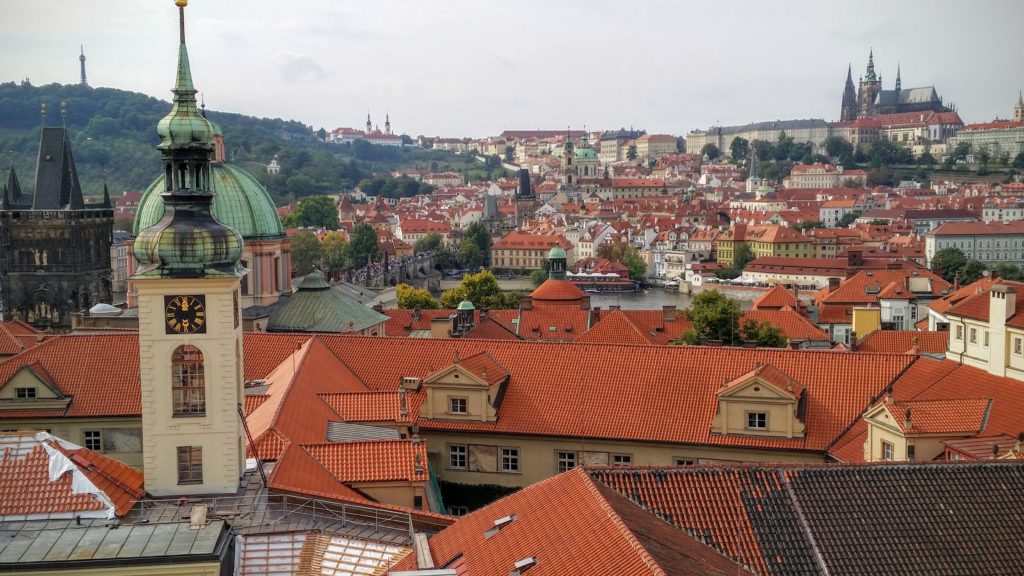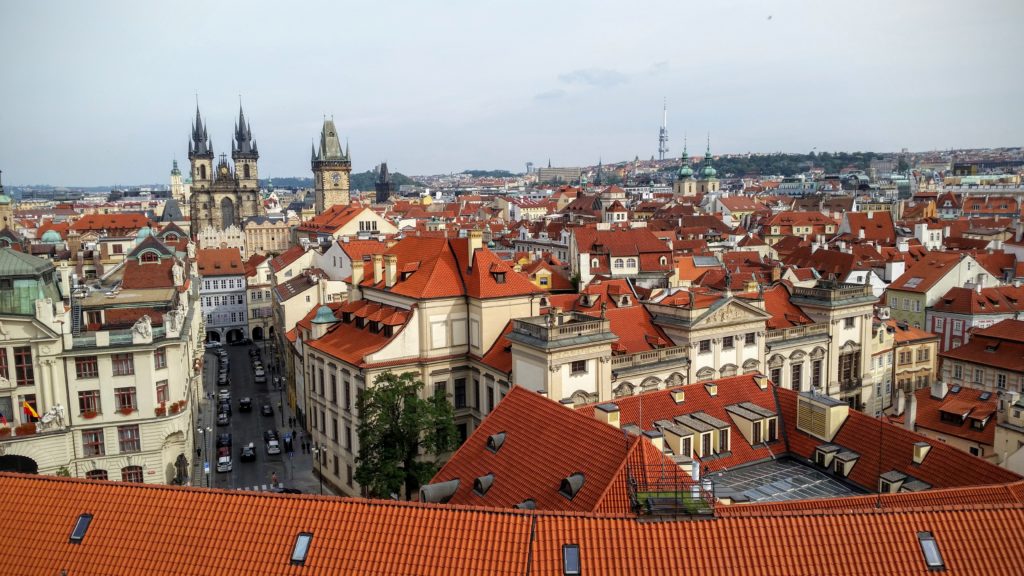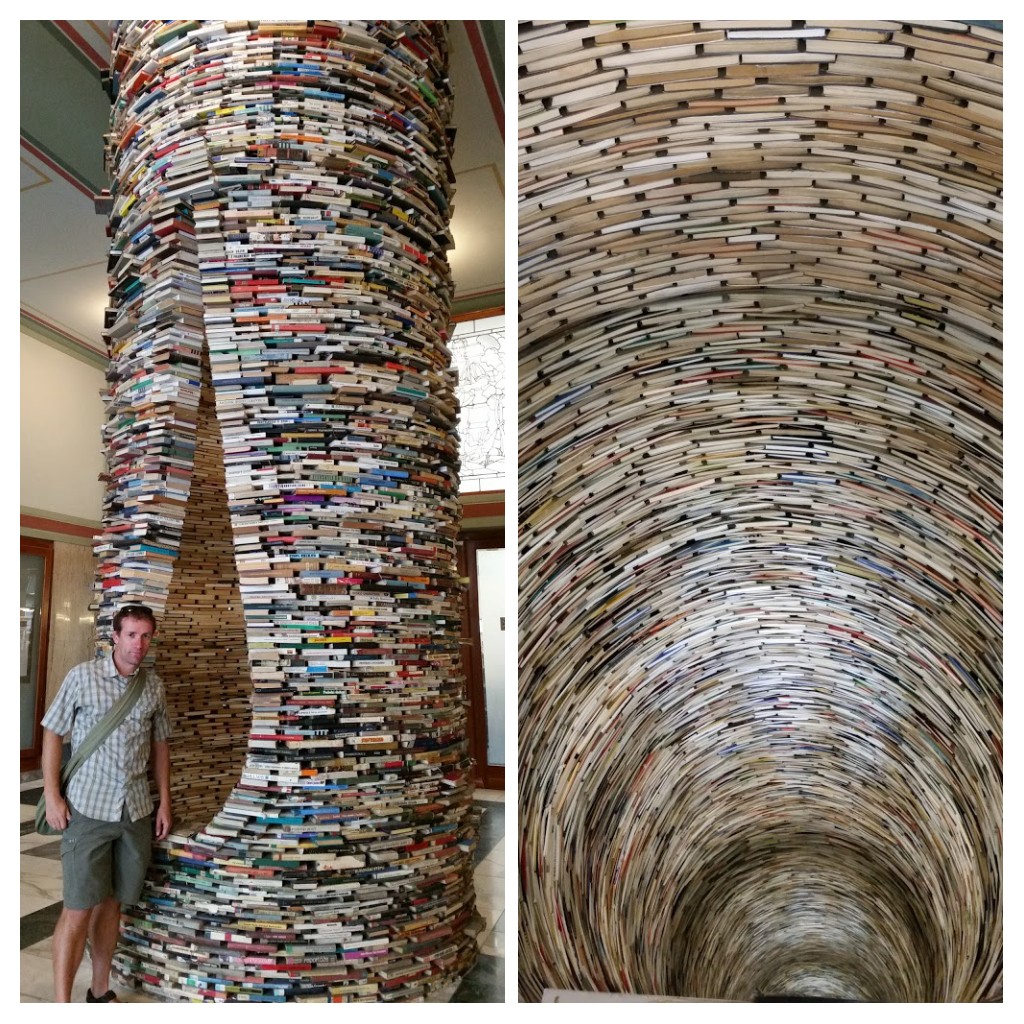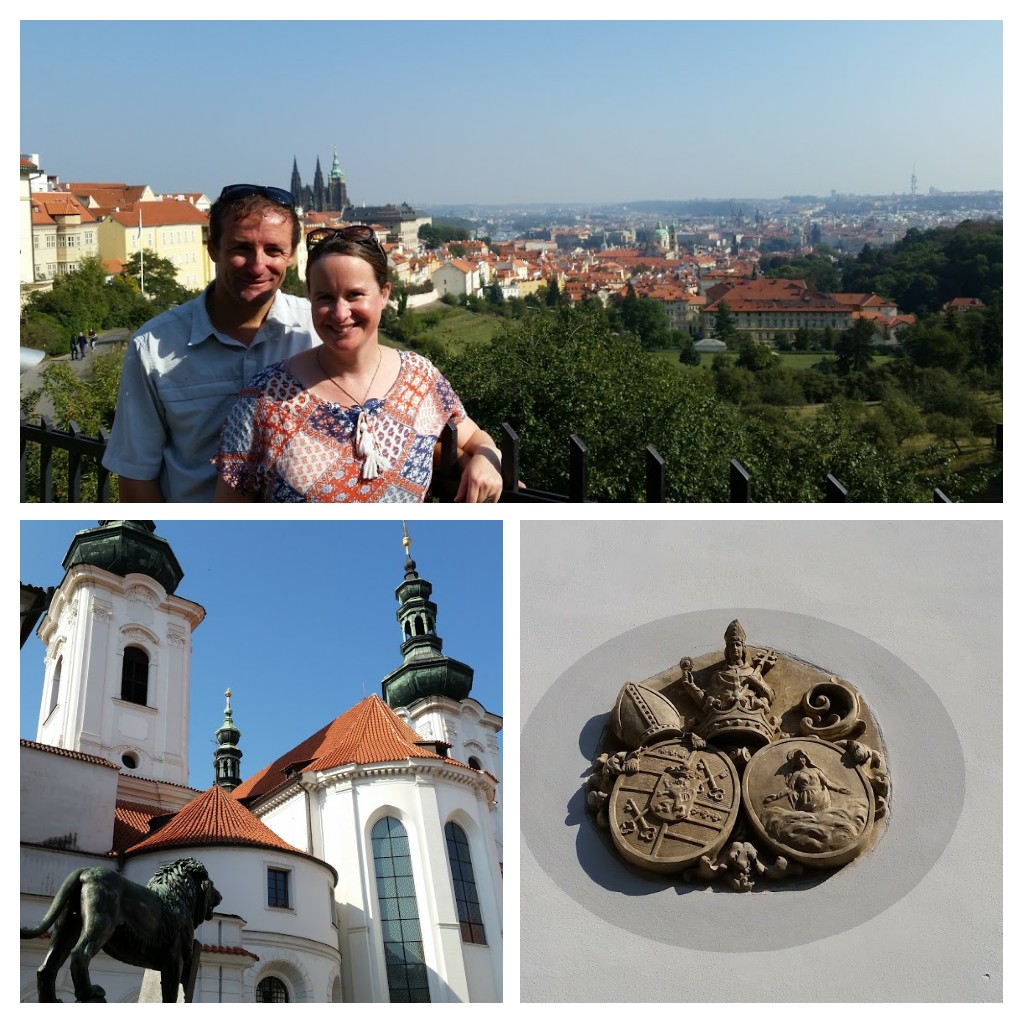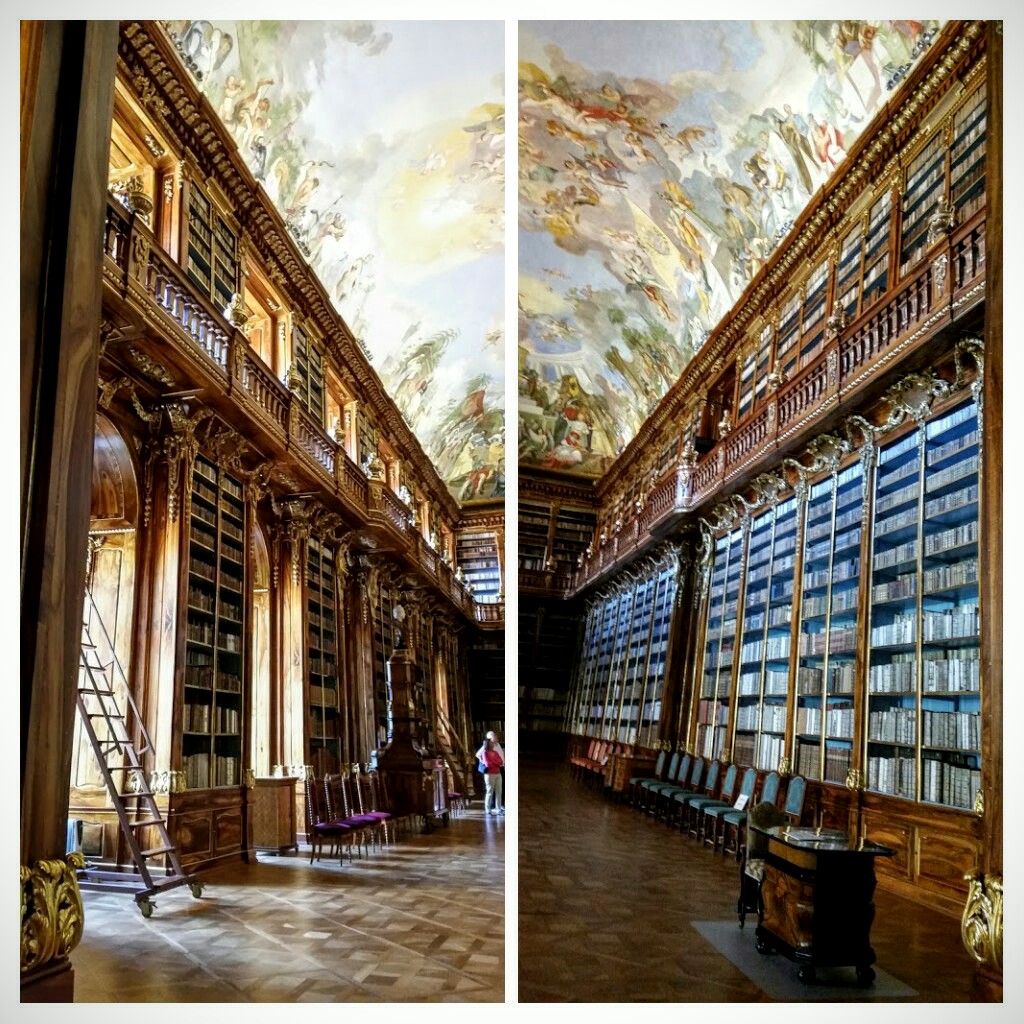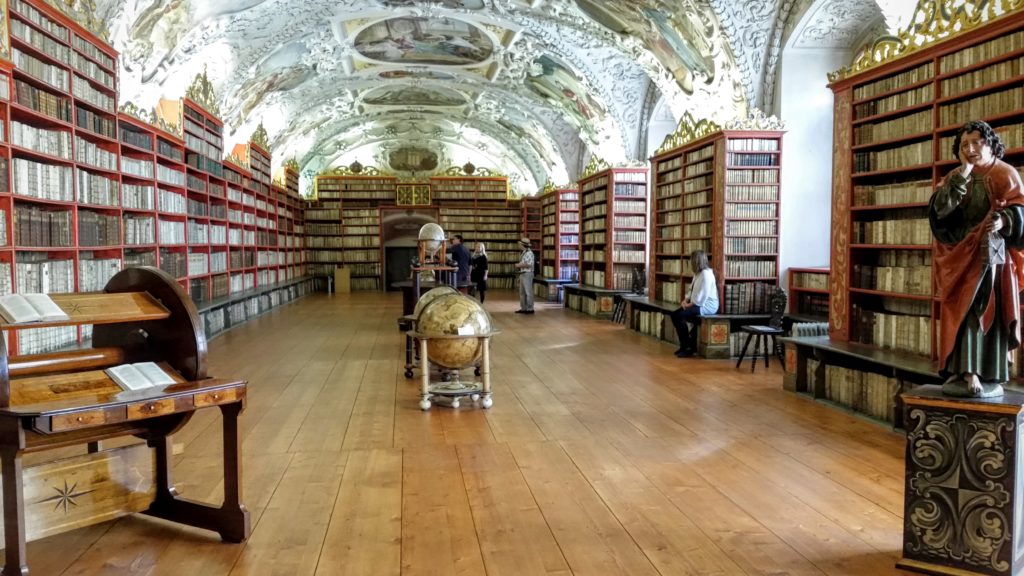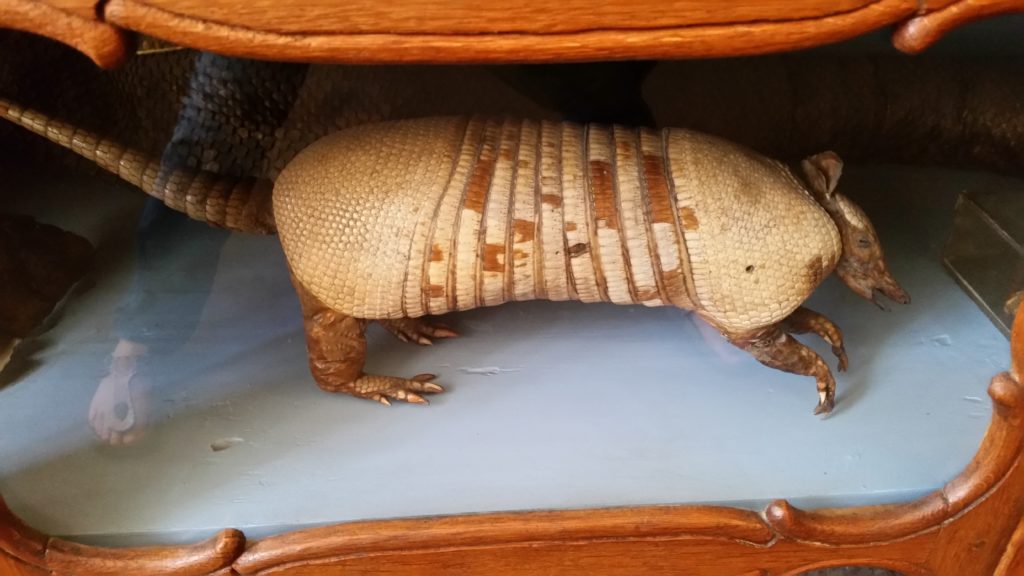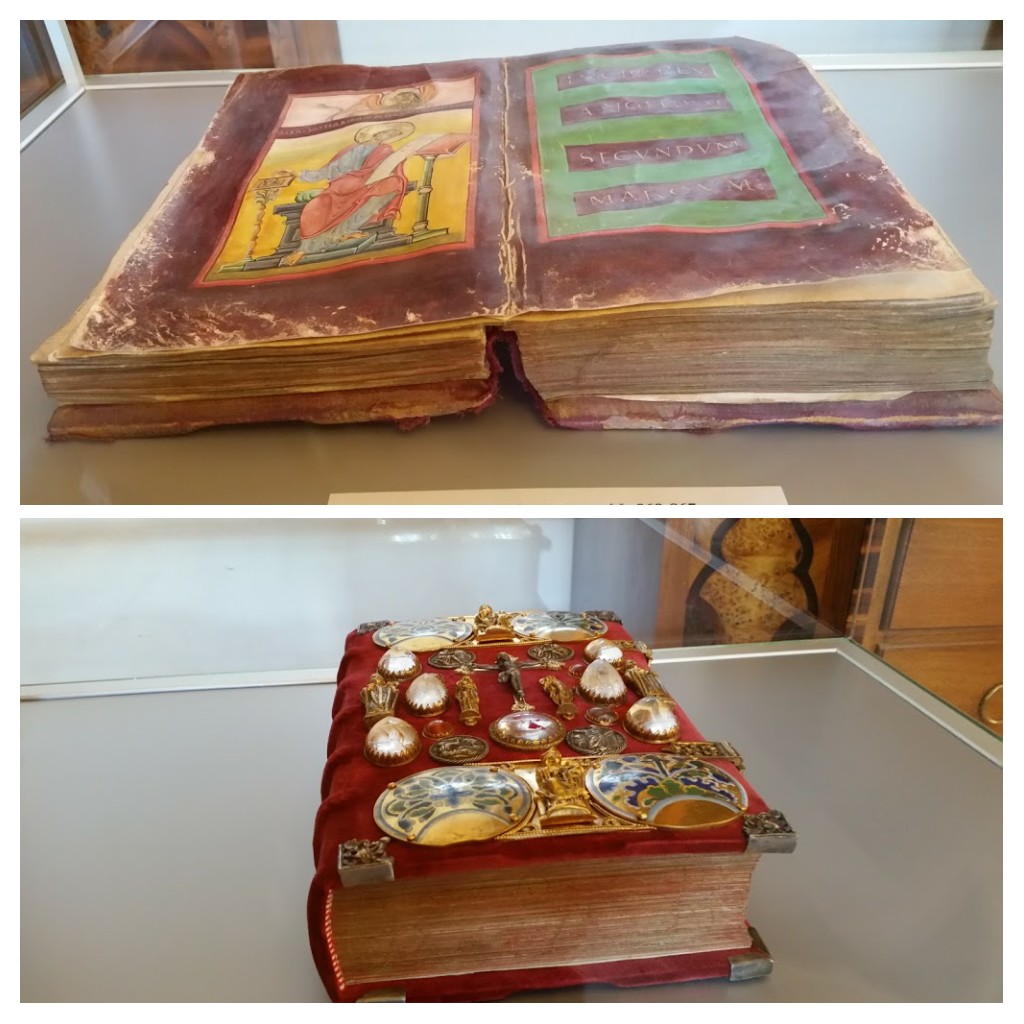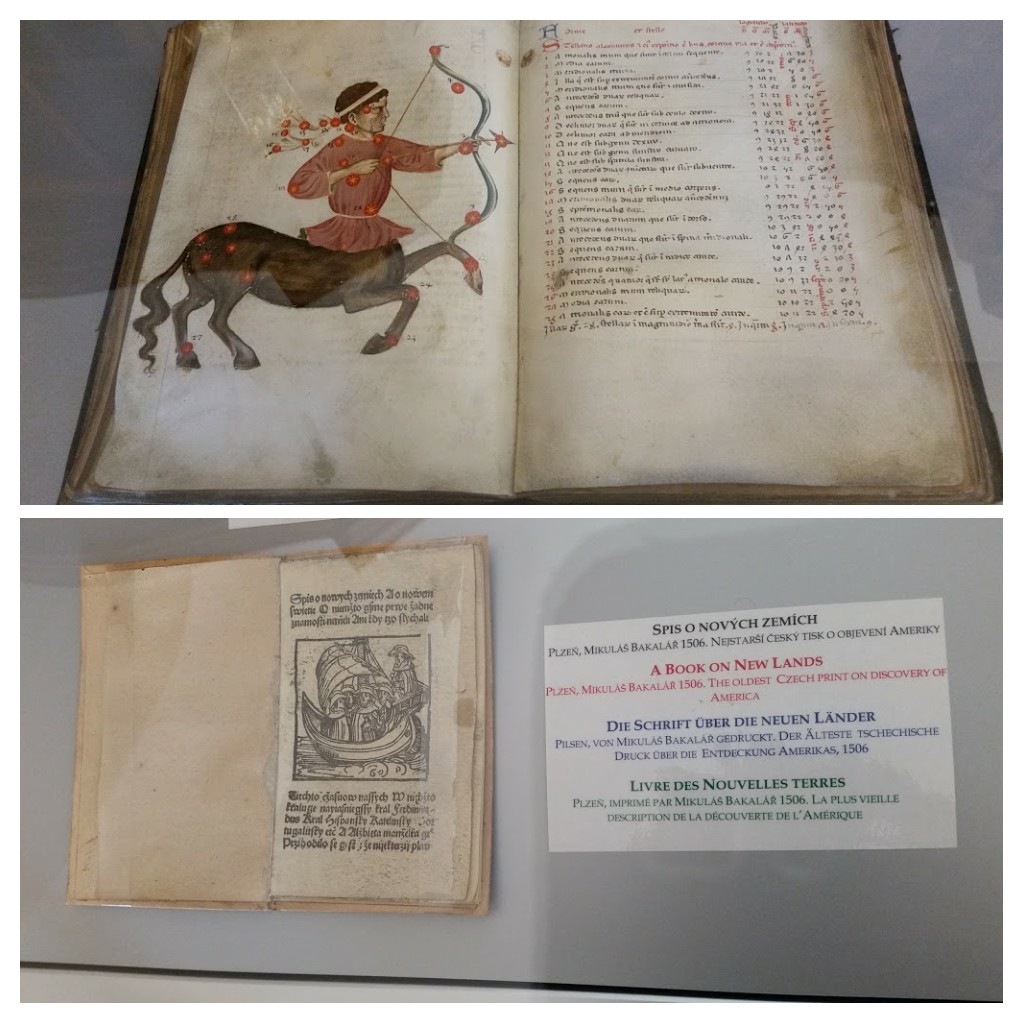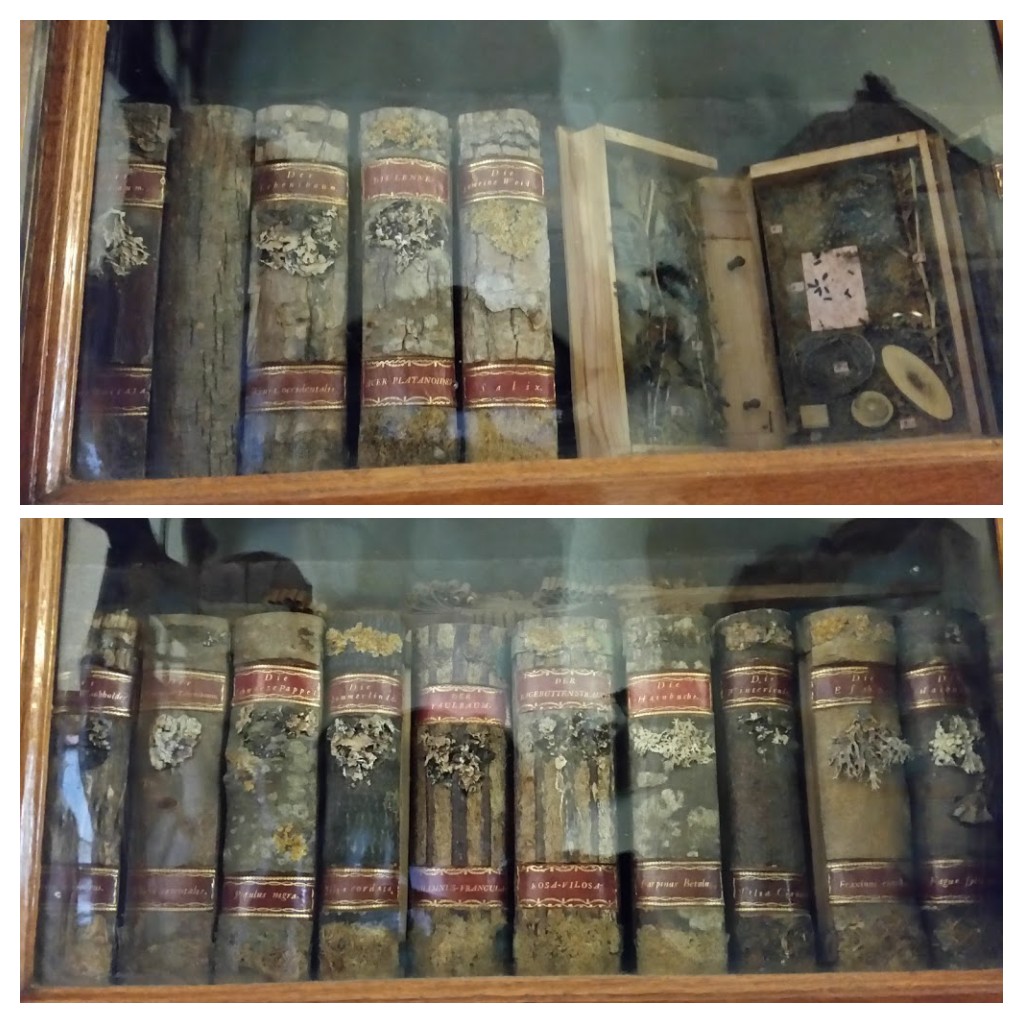Although I had already been to Prague twice there were several places we visited this trip that I had not been to before. When googling a few days before our arrival I came across a recommendation to see a few libraries in Prague. I wasn’t sure what to expect but decided it sounded like something a bit different to the usual churches and castles. First up was a visit to the Klementinum complex.
The Klementinum complex includes the Mirror Chapel, Baroque Library Hall, Meridian Hall and the Astronomical Tower. The whole complex covers 2 hectares. The Baroque Library hall is the main drawcard but unfortunately I wasn’t allowed to take pictures in there (and wasn’t as sneaky as Gena who cunningly positioned her cell phone in her jeans pocket and manoeuvred it to take pics). But here’s what it looks like:
The library hall was completed in 1722 and the inscriptions on the library shelves and arrangement of the books remain very much as it was then. The books in the hall include foreign-language theological literature that had been deposited in the Klementinum since the year 1600. Down the middle of the library there were lots of geographical and astronomical globes on display. The art on the ceiling was quite elaborate and full of symbolism. There were three main sections with the middle one like an optical illusion as it made the ceiling seem like a dome when in fact it was flat. It was pretty amazing seeing this beautiful place and all those old books. They are underway with scanning every page (it will take years) so that anyone can read (for free) the books in an online database. They are mostly in Latin though so there’s a limited audience who will benefit from the results of the laborious process.
The Mirror Chapel from 1724 was quite interesting, as it had positioned mirrors on the ceiling to capture the star pattern from the floor, so it felt like you could see the heavens when you looked up. Likewise on the sides of the chapel mirrors were positioned to reflect each other and symbolise infinity.
Further up the stairs we came to the Meridian Hall which was used for determining noon with a small hole up in the wall allowing sunlight to shine on a string on the floor. From 1842 until the 1920s flags were raised out the window of the tower to indicate to Prague citizens that it was noon.
More steps and we get to the Astronomical Tower which was completed in 1722 and has a sculpture atop it of Atlas holding the celestial orb on his shoulders. At first the tower served as a look out but then from the mid 18th century it was gradually equipped with astronomical devices constructed according to the drawings of a professor of mechanics, Jan Klein. Jesuit scholars used the tower for astronomical observations attended by students and the tower was in use until the 1930s. These days not much evidence is left of its astronomical uses but the views from the top are fantastic as the Klementinum is situated in the heart of the city.
Just outside the entrance to the complex is the Prague City Library which has both free public toilets and a fabulous book tower thing in the entrance… way cool! It is a piece by a Slovak artist and worth a look.
The next library I visited (on my own as Ants wasn’t terribly interested in more libraries) was at Strahov monastery. We had actually been right outside the entrance to this library on our first day exploring Prague but had only seen the church that was part of the monastery and not noticed the building right beside it! We were a little distracted by the views and the restaurant which advertised itself as having the ‘Best view of the Prague’.
Strahov monastery was founded in 1143 and the Strahov Library, although not from this time, is the second oldest church library in Bohemia with an uninterrupted existence. The oldest manuscript is the Strahov Gospel, dated 860. The library has two halls which were both fantastic to see and in the corridor between them were the ‘Cabinet of Curiosities’.
The building of the Philosophical Hall, the first library you see, began in 1783. Its walnut wood interior was installed between 1794-1797. The fresco on the ceiling is called ‘The Spiritual development of mankind’. The oldest visitors book records visitors from the year 1792. More than 50,000 volumes are in the hall in the fields of philosophy, history, philology, law and natural sciences. I loved the grandeur of this room with the high ceilings and two levels of bookshelves.
The older Theological Hall, built from 1671-79, with its stucco cartouche looks quite different. It has just the one level and therefore a lower ceiling. It features a late Gothic wooden statue of St John the Evangelist. In his left hand he is holding a girdle book (with pouch binding) – a travel volume. On the other side of the room, there is a book wheel from 1678, used for study and compilation work. The gear inside enabled its shelves to remain the same angle so that the books would not slide down when the wheel was turned. Like the baroque library in the Klementinum complex, the centre of the library features terrestrial and astronomical globes. Over 20,000 volumes fill this hall with one whole wall filled exclusively with various editions of the Bible or its parts, printed in various languages.
The hallway is full of curiosities, including many sea creatures, insects and other natural science objects. The armadillo from 1758 was cool!
Of note in the hallway is a VERY old book – the Strahov Gospel (860 CE) with an elaborate cover – developed and changed up until the 16th century.
There are a few old books on display, some of them beautifully illustrated in colour, others in sketch style. I Iiked the one with the guy on a horse. It was Al-Sufi’s astronomical atlas written in North Italy around the mid 14th century.
My favourite exhibit in the hall was a bookcase full of what looked like a set of encyclopaedias. On closer inspection one could see that each ‘book’ was in fact a kind of box, each made from a different type of wood. The spine of each book was the bark of the corresponding tree and on it you could also see lichen. It had the name of the tree as though it was the title of the book. Instead of pages the ‘book’ was like a box inside housing the trees’ leaves, seeds, flowers or pinecones, some even had common insects found in the tree. This exhibit was called a Xyloteka and was from 1825.
So there you have it… libraries in Prague are full of amazing things & worth checking out. If you want to actually go inside the Strahov Library halls with a guide and get a bit closer you need to book weeks or preferably months in advance as they only take a limited number of tours. But if like me you are not that organised and just see the halls from the corridor, it is still a very worthwhile visit.
